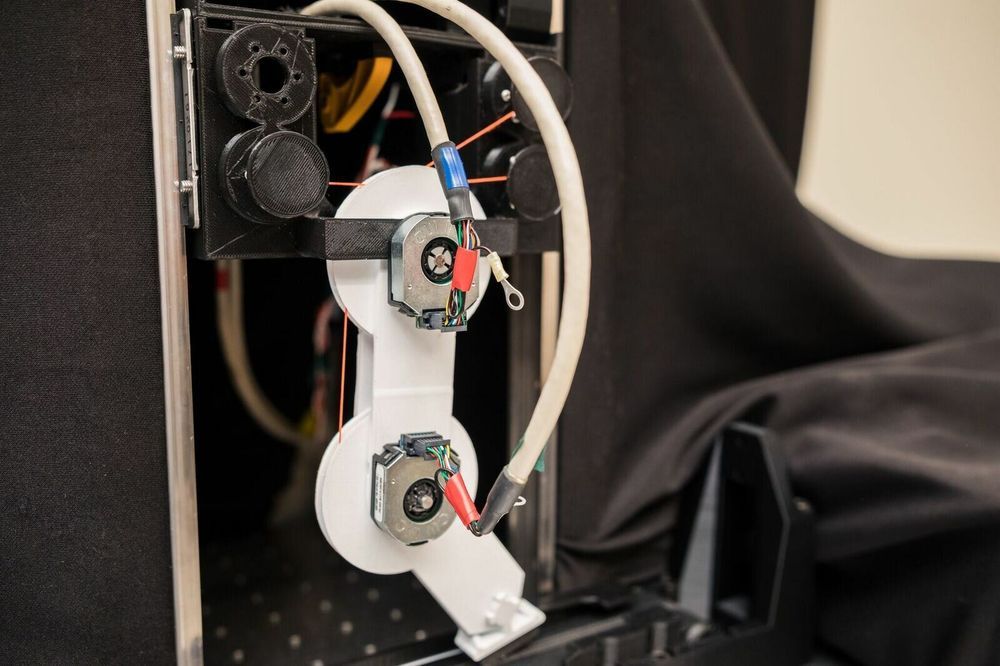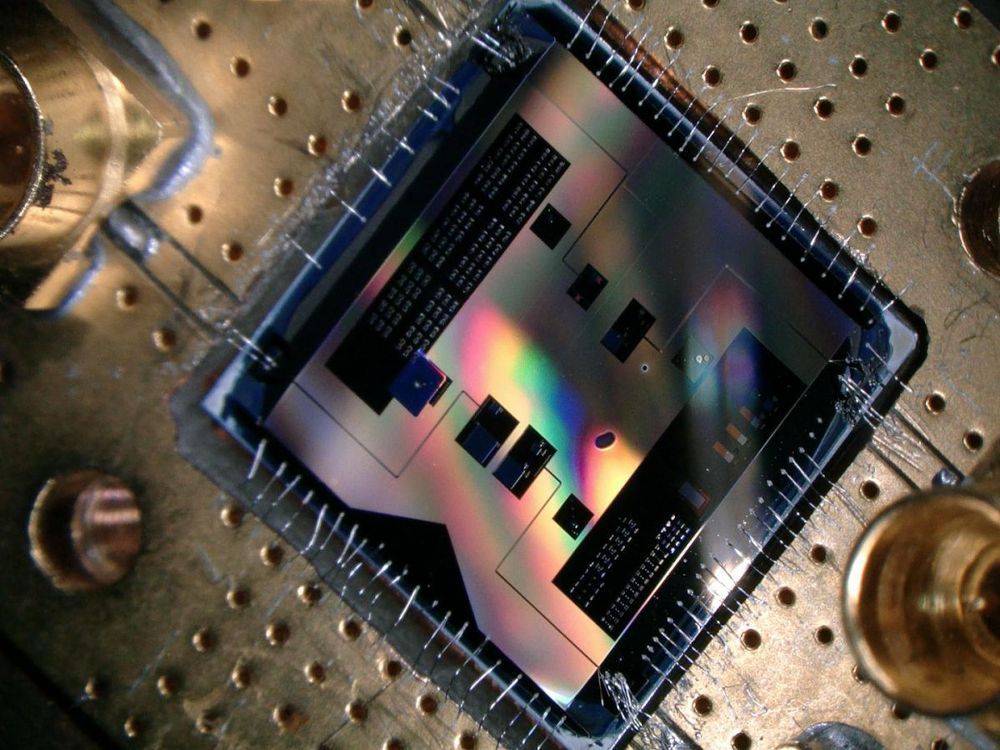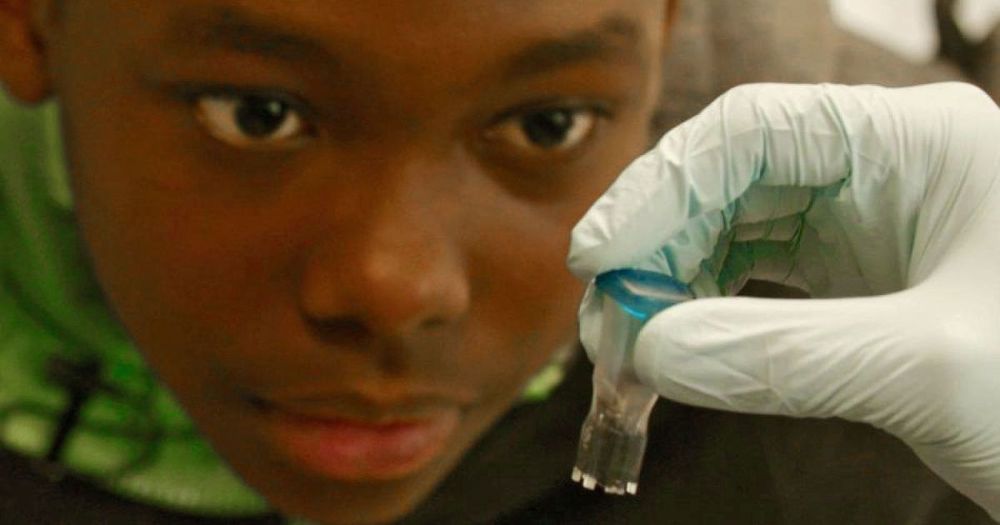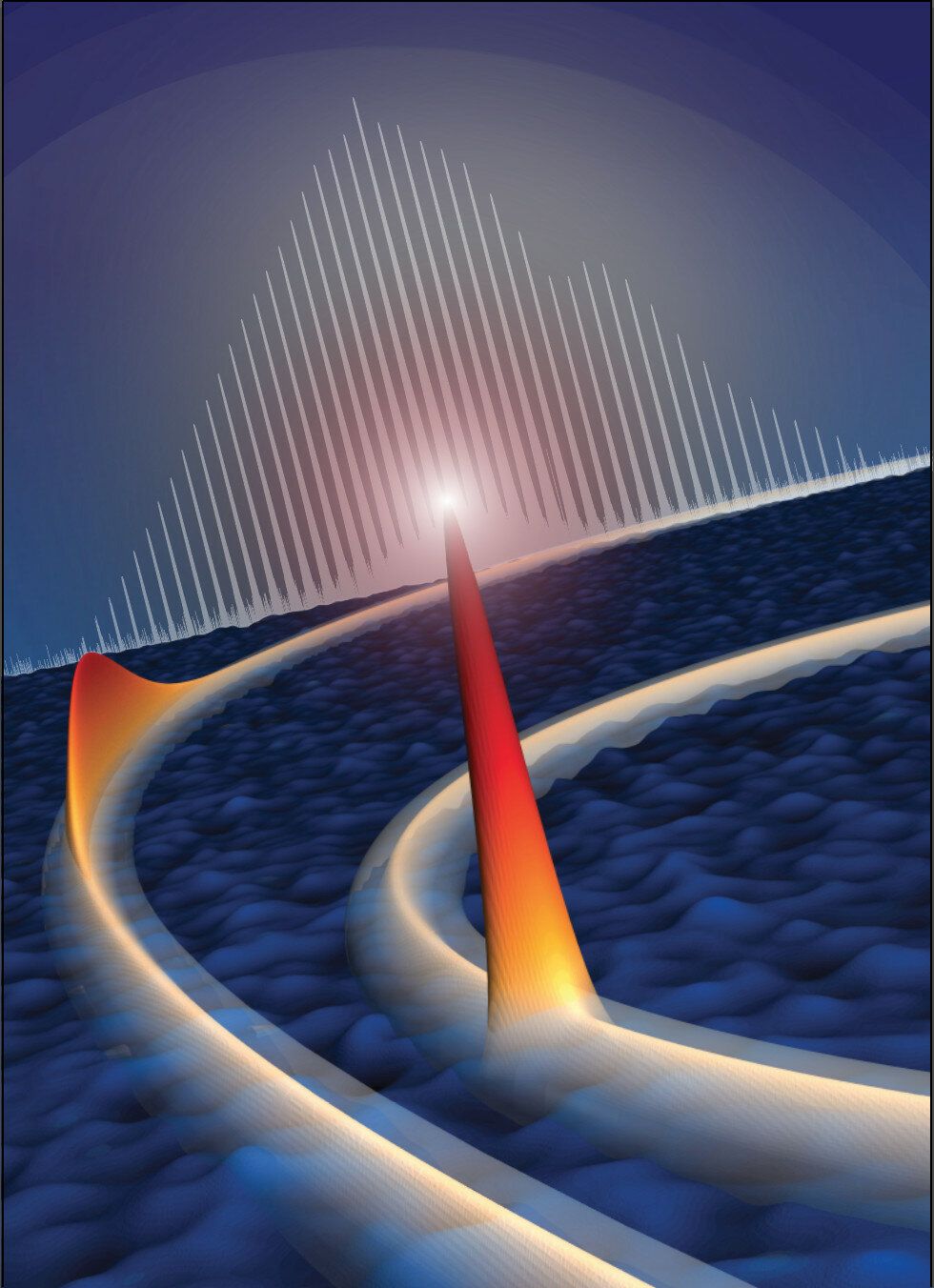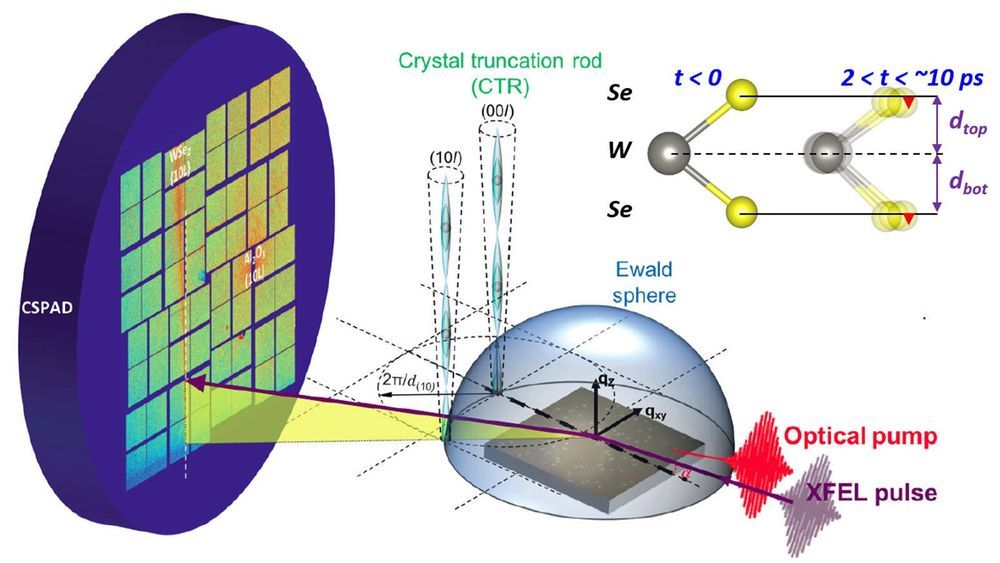Page 8751
Mar 11, 2019
A robotic leg, born without prior knowledge, learns to walk
Posted by Genevieve Klien in categories: biotech/medical, engineering, information science, robotics/AI
For a newborn giraffe or wildebeest, being born can be a perilous introduction to the world—predators lie in wait for an opportunity to make a meal of the herd’s weakest member. This is why many species have evolved ways for their juveniles to find their footing within minutes of birth.
It’s an astonishing evolutionary feat that has long inspired biologists and roboticists—and now a team of USC researchers at the USC Viterbi School of Engineering believe they have become the first to create an AI-controlled robotic limb driven by animal-like tendons that can even be tripped up and then recover within the time of the next footfall, a task for which the robot was never explicitly programmed to do.
Francisco J. Valero-Cuevas, a professor of Biomedical Engineering a professor of Biokinesiology & Physical Therapy at USC in a project with USC Viterbi School of Engineering doctoral student Ali Marjaninejad and two other doctoral students—Dario Urbina-Melendez and Brian Cohn, have developed a bio-inspired algorithm that can learn a new walking task by itself after only 5 minutes of unstructured play, and then adapt to other tasks without any additional programming.
Continue reading “A robotic leg, born without prior knowledge, learns to walk” »
Mar 11, 2019
Researchers Tune in to Smallest Radio Frequency in Quantum Mechanics
Posted by Genevieve Klien in category: quantum physics
Mar 11, 2019
CRISPR doc ‘Human Nature’ embraces the hope and peril of gene editing
Posted by Genevieve Klien in categories: bioengineering, biotech/medical, education
Mar 11, 2019
China Poised to Overtake US Economy in 2020
Posted by Quinn Sena in category: economics
Explosive growth in emerging economies will help developing nations exceed America’s economic growth.
Mar 11, 2019
Scientists one step closer to a clock that could replace GPS and Galileo
Posted by Quinn Sena in categories: mapping, mobile phones
Scientists in the Emergent Photonics Lab (EPic Lab) at the University of Sussex have made a breakthrough to a crucial element of an atomic clock—devices which could reduce our reliance on satellite mapping in the future—using cutting-edge laser beam technology. Their development greatly improves the efficiency of the lancet (which in a traditional clock is responsible for counting), by 80% — something which scientists around the world have been racing to achieve.
Currently, the UK is reliant on the US and the EU for the satellite mapping that many of us have on our phones and in our cars. That makes us vulnerable not only to the whims of international politics, but also to the availability of satellite signal.
Dr. Alessia Pasquazi from the EPic Lab in the School of Mathematical and Physical Sciences at the University of Sussex explains the breakthrough: With a portable atomic clock, an ambulance, for example, will be able to still access their mapping whilst in a tunnel, and a commuter will be able to plan their route whilst on the underground or without mobile phone signal in the countryside. Portable atomic clocks would work on an extremely accurate form of geo-mapping, enabling access to your location and planned route without the need for satellite signal.
Mar 11, 2019
Finding the right ‘dose’ for solar geoengineering
Posted by Quinn Sena in categories: climatology, engineering, sustainability
One of the key misconceptions about solar geoengineering—putting aerosols into the atmosphere to reflect sunlight and reduce global warming—is that it could be used as a fix-all to reverse global warming trends and bring temperature back to pre-industrial levels.
It can’t. Applying huge doses of solar geoengineering to offset all warming from rising atmospheric CO2 levels could worsen the climate problem—particularly rainfall patterns—in certain regions. But could smaller doses work in tandem with emission cuts to lower the risks of a changing climate?
New research from the Harvard John A. Paulson School of Engineering and Applied Sciences (SEAS), in collaboration with MIT and Princeton University, finds that if solar geoengineering is used to cut global temperature increases in half, there could be worldwide benefits without exacerbating change in any large geographic area.
Mar 11, 2019
Researchers turn liquid metal into a plasma
Posted by Caycee Dee Neely in categories: nuclear energy, particle physics, security
Scientists at the University of Rochester’s Laboratory for Laser Energetics have achieved a plasma research first. They were able to convert the liquid metal deuterium to the plasma state and directly observe the interaction threshold.
For the first time, researchers at the University of Rochester’s Laboratory for Laser Energetics (LLE) have found a way to turn a liquid metal into a plasma and to observe the temperature where a liquid under high-density conditions crosses over to a plasma state. Their observations, published in Physical Review Letters, have implications for better understanding stars and planets and could aid in the realization of controlled nuclear fusion — a promising alternative energy source whose realization has eluded scientists for decades. The research is supported by the US Department of Energy and the National Nuclear Security Administration.
What is a Plasma?
Plasmas consist of a hot soup of free moving electrons and ions — atoms that have lost their electrons — that easily conducts electricity. Although plasmas are not common naturally on Earth, they comprise most of the matter in the observable universe, such as the surface of the sun. Scientists are able to generate artificial plasmas here on Earth, typically by heating a gas to thousands of degrees Fahrenheit, which strips the atoms of their electrons. On a smaller scale, this is the same process that allows plasma TVs and neon signs to “glow”: electricity excites the atoms of a neon gas, causing neon to enter a plasma state and emit photons of light.
Mar 11, 2019
Ultrathin and ultrafast: Scientists pioneer new technique for two-dimensional material analysis
Posted by Quinn Sena in categories: materials, particle physics
Discovery allows scientists to look at how 2-D materials move with ultrafast precision.
Using a never-before-seen technique, scientists have found a new way to use some of the world’s most powerful X-rays to uncover how atoms move in a single atomic sheet at ultrafast speeds.
The study, led by researchers at the U.S. Department of Energy’s (DOE) Argonne National Laboratory and in collaboration with other institutions, including the University of Washington and DOE’s SLAC National Accelerator Laboratory, developed a new technique called ultrafast surface X-ray scattering. This technique revealed the changing structure of an atomically thin two-dimensional crystal after it was excited with an optical laser pulse.

